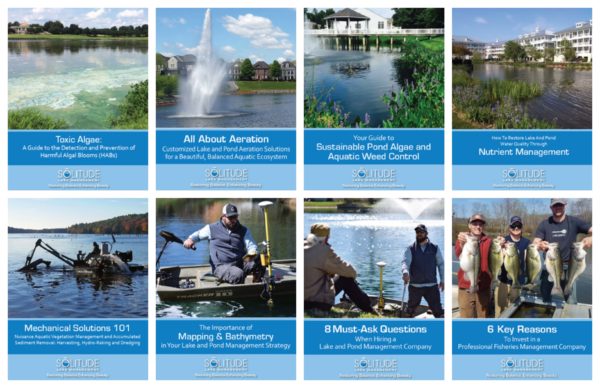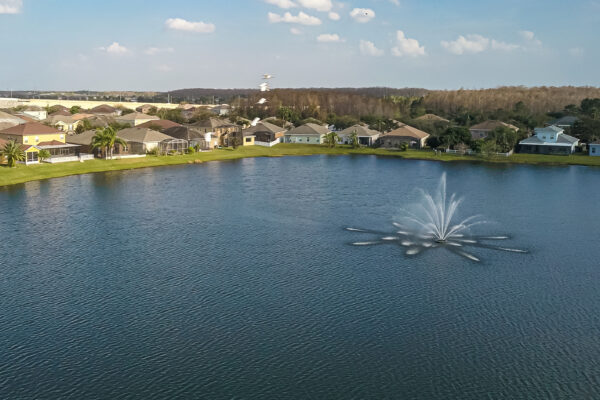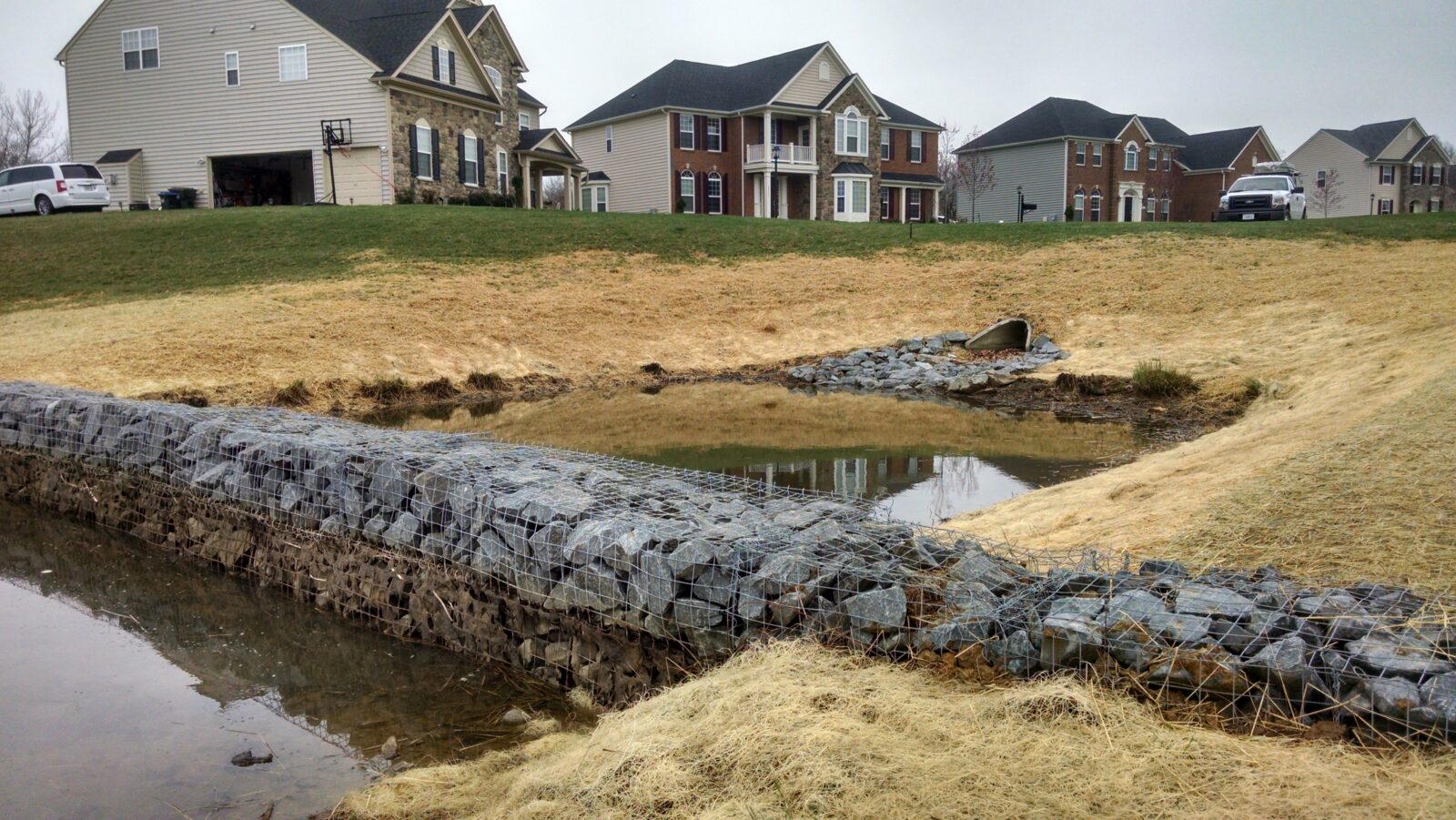
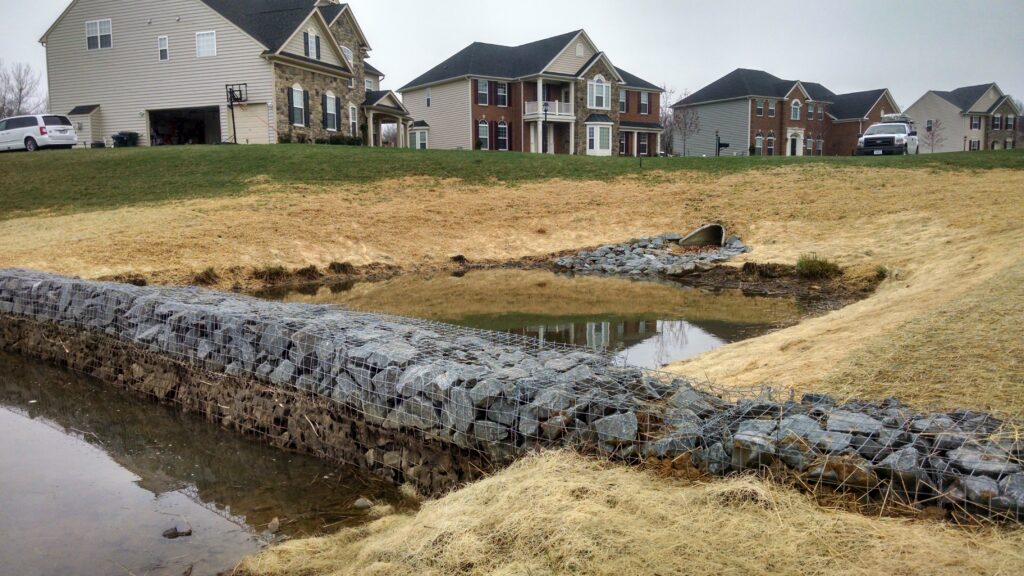
How to Maintain a Level Spreader for Long-Term Stormwater Performance
What Is a Stormwater Level Spreader and How Do You Maintain It?
A level spreader is a stormwater management structure that evenly distributes runoff across a slope to help reduce erosion and filter pollutants.
To maintain a level spreader effectively:
Inspect it routinely, especially after storms or heavy rainfall.
Clear sediment, debris, and excess vegetation.
Keep the spreader’s lip level to ensure even water flow.
Repair any structural damage or issues with the surrounding areas.When maintained diligently, level spreaders become a powerful tool in helping reduce stormwater-related problems.
A Closer Look at Level Spreaders
Level spreaders play a small but powerful role in stormwater management systems. They slow high-velocity runoff—often flowing through pipes or swales—by spreading it evenly across a wider surface. This helps minimize erosion and encourages the soil to soak in water, naturally filtering pollutants.
These structures can be built from concrete, stone, vegetated berms, or molded plastic. They are commonly installed at the outlet of drainage systems or along slopes where water needs to be managed before it causes damage.
When paired with native vegetation or positioned aside sensitive areas like wetlands, a properly functioning level spreader can protect landscapes, recharge groundwater, and help maintain compliance with stormwater regulations.
The key to that performance is a little routine maintenance. We’ll cover that in the next section.
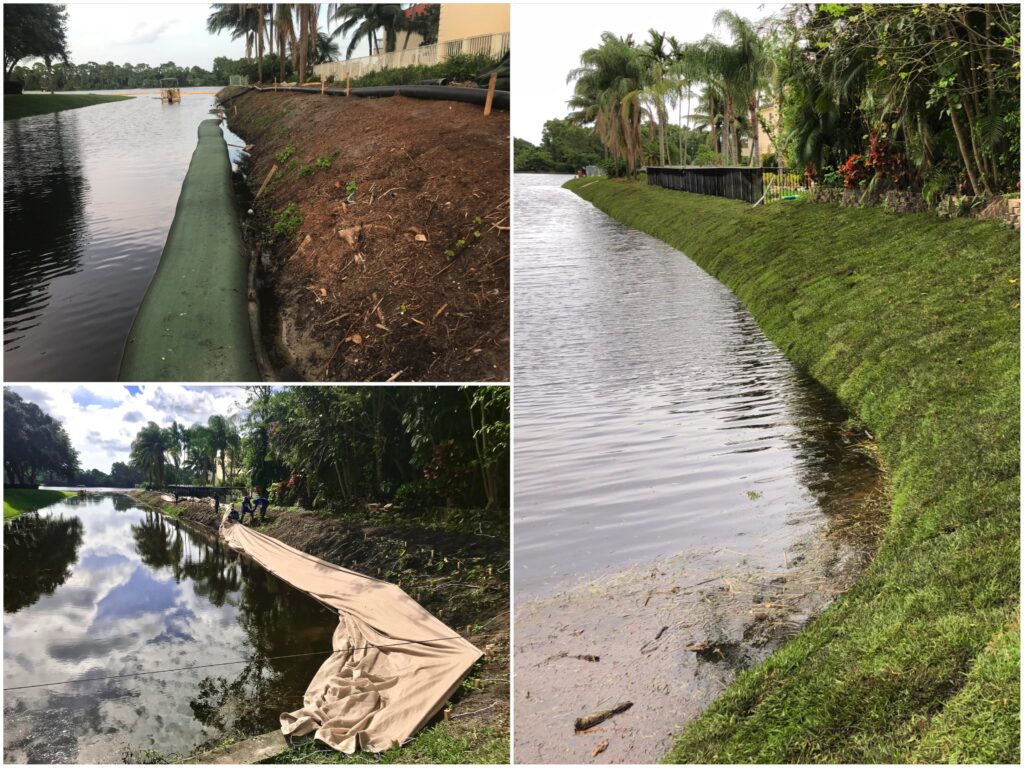
Introduction to Stormwater Management
Stormwater management is vital to keeping our ecosystems healthy and minimizing flooding and erosion risks. However, not all components of these systems get the attention they deserve.
The level spreader is among stormwater systems’ most overlooked yet essential structures. This often-ignored tool plays a critical role in controlling runoff, protecting the integrity of slopes, and filtering pollutants.
This guide will break down everything you need to know about level spreaders—from their function to straightforward tips for upkeep. By the end of this blog, you’ll have the full scoop on how to keep your level spreader working efficiently for years to come.
Why Stormwater Management Systems Matter
Stormwater runoff doesn’t just mean water flowing across land—it carries pollutants, sediment, and debris. When left uncontrolled, the results can be harmful to both people and the environment.
Common consequences include:
- Localized flooding that can damage properties and disrupt communities.
- Erosion along streambanks or slopes, leading to environmental degradation.
- Pollutant discharge into rivers and lakes, harming aquatic ecosystems.
- Stress on infrastructure, from overwhelmed drainage systems to road damage.
To combat these challenges, engineered stormwater solutions like rain gardens, retention ponds, bioswales, and level spreaders are implemented. Together, these tools slow water flow, provide filtration, and protect our environment.
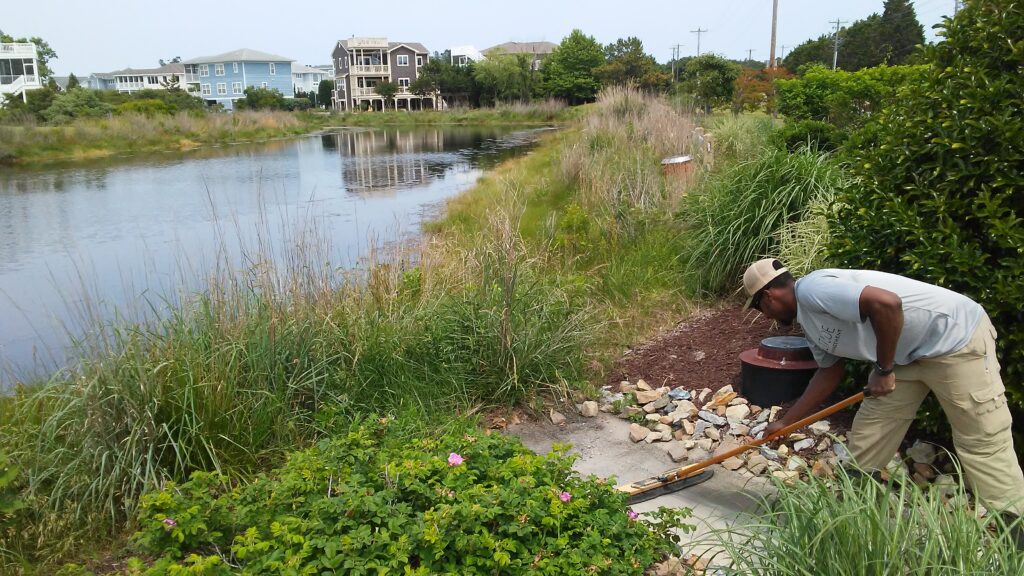
How to Maintain a Level Spreader
Level spreaders offer simplicity in design, but regular maintenance is non-negotiable to keep them functioning efficiently. Below are actionable maintenance tips, divided into four areas of focus.
How Often Should You Inspect a Level Spreader?
The longevity of your level spreader starts with consistent inspections.
A good rule of thumb is to check it:
- Seasonally, at least once per quarter.
- After major storms, high-flow events can cause damage or blockage.
- More frequently, if your site is prone to sedimentation or on steep slopes.
You can prevent minor issues from escalating into costly repairs by staying proactive.
What to Look for During Maintenance
During inspections, focus on these areas to identify any problems early:
- Sediment accumulation at the inlet or outlet can disrupt even water flow.
- Debris or overgrown vegetation obstructing the flow path.
- Structural damage, such as cracks in concrete or displaced stones.
- Erosion or gullies forming below the spreader signaling concentrated flow instead of distributed sheet flow.
- Lip alignment, ensuring the spreader remains level for proper water distribution.
Addressing these concerns promptly ensures long-term efficiency.
Common Problems to Avoid
Certain issues can undermine the effectiveness of your level spreader if not managed carefully. Watch for these red flags:
- Uneven water distribution, often caused by an uneven lip or blockages.
- Bypassed flow due to unchecked vegetation or physical obstructions.
- Concentrated runoff may lead to erosion, gullies, or ruts below the spreader.
- Vehicle damage, especially in areas designated for sheet flow.
You can prevent or reduce these problems with routine maintenance, saving time and resources in the long run.
Why Maintenance Logs Matter
Documenting your inspections and upkeep efforts might seem unnecessary at first, but it delivers substantial benefits and aligns with established stormwater best management practices.
- Regulatory compliance with local stormwater management ordinances.
- Insight into recurring issues, helping you foresee and plan for potential repairs.
- Continuity for maintenance teams, especially when transitioning responsibilities or hiring contractors.
Photo documentation provides an added layer of value, allowing you to track changes and demonstrate improvements over time.
Key Takeaways
Maintaining a level spreader doesn’t have to be complicated but requires regular attention and care. Here are the most important points to remember:
- A level spreader ensures even flow, helps reduce erosion, and filters pollutants.
- Routine maintenance, from inspections to debris clearing, preserves its functionality.
- Inspections should be quarterly, and always after significant storms.
- Keep the lip perfectly level, and address sediment, debris, or damage promptly.
- Document everything—logs help meet compliance goals and improve future upkeep.
Small maintenance efforts go a long way in extending the life and efficiency of your stormwater system.
Need Help Maintaining a Level Spreader?
Your stormwater system performs best with proactive care. Whether you manage a municipal property or a private site, we’re here to help. Our team specializes in keeping your level spreader in top condition, from inspections to repairs. Give your future self some peace of mind.



